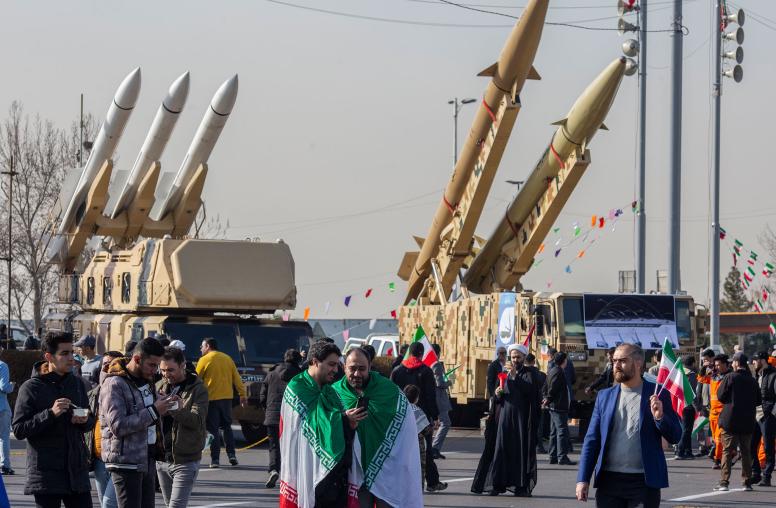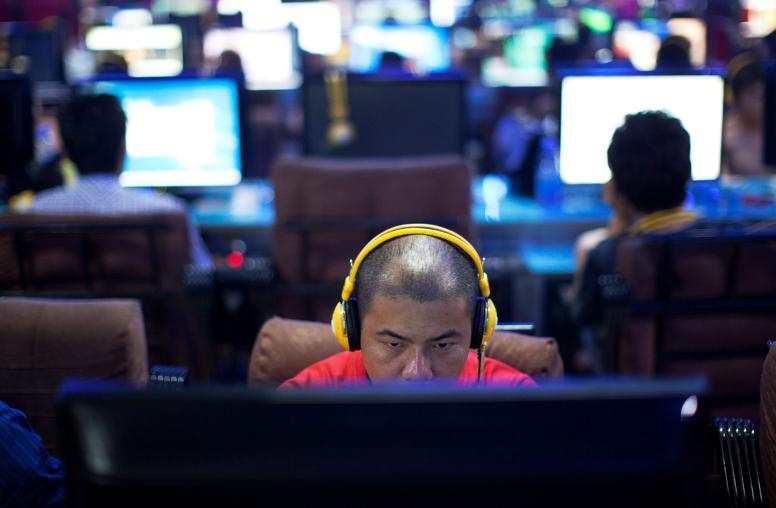Are China and the Philippines on a Collision Course?
China’s gray zone operations risk a war that could draw in the United States.
Tensions between China and the Philippines have sharply escalated in recent months over territorial disputes in the South China Sea that could draw in the United States.

On March 5, Chinese coast guard vessels sideswiped a Philippine patrol vessel and used water cannons against another boat carrying a Filipino admiral and provisions to Filipino service members stationed at the Philippine-occupied Second Thomas Shoal, or Ayunyin Shoal, in the South China Sea. Manila, which calls the sea the West Philippines Sea, has been pushing back against China’s so-called ten-dash line through which Beijing stakes claim to much of the sea, including land parcels.
In a statement following the March 5 incident, State Department Spokesperson Matthew Miller condemned Chinese actions and said the United States is obliged by commitments made in the 1951 U.S.-Philippines Mutual Defense Treaty to come to the Philippines’ defense in the event of “armed attacks on Philippine armed forces, public vessels, or aircraft — including those of its Coast Guard — anywhere in the South China Sea.”
Meanwhile, Philippine President Ferdinand Marcos Jr. plans to meet U.S. Secretary of State Antony Blinken on March 19 to discuss security matters.
USIP’s Andrew Scobell, Dean Cheng, Brian Harding and Carla Freeman discuss the latest developments in the South China Sea.
Why are China and the Philippines on a collision course in the South China Sea?
Scobell: China’s latest efforts to prevent the Philippines from resupplying its detachment of marines stationed at Second Thomas Shoal represents a significant escalation of its aggressive and coercive actions. Available evidence suggests that China’s objective is to dislodge the Philippine marines, and there appears to be a greater sense of urgency in recent months.
Beijing is practiced at coordinated maneuvers by Chinese coast guard ships, maritime militia vessels (which appear as fishing boats), combined with People’s Liberation Army Navy ships. China’s “gray hulls” usually remain in the background with the “white hulls” and fishing boats taking the lead in harassing Philippine ships. This allows Beijing to apply armed force while keeping its actions just below the threshold of war.
Beijing has repeatedly sought to disrupt Manila’s resupply efforts in the past. However, recent actions represent a qualitative shift in China’s behavior, which can be characterized as gray zone operations on steroids.
Cheng: China is sustaining its longstanding effort to dominate the South China Sea, based on its “historical claims” (a line of argument that the Permanent Court of Arbitration rejected in 2016) and the so-called ten-dash line, whose meaning China has deliberately kept vague and amorphous.
China’s efforts include building artificial islands atop coral reefs and other features, and the use of legal warfare (in this case, a heavy reliance on the China Coast Guard) and gray zone tactics (the exploitation of its substantial maritime militia) to coerce other claimants.
What is worrisome is that China’s efforts against the Philippines raise the real risk of escalation to include the United States. While the United States has refrained from making any formal statements regarding sovereignty over any of the South China Sea geographic features, the U.S.-Philippines Mutual Defense Treaty indicates that hostile actions against Philippine government ships and aircraft would be grounds for invoking that treaty’s mutual defense provisions. China is undertaking risky moves by engaging Philippine efforts to resupply its garrison on Second Thomas Shoal.
More problematically, Beijing has warned that efforts to counter Chinese actions are viewed as the source of risk and potential escalation. In comments this past week directed at Manila and New Delhi, Beijing has warned that it is the latter who are elevating tensions as the Philippines and India act to counter China’s provocative actions in their respective border areas.
What is China doing to manage these rising tensions in the South China Sea?
Harding: News emerged this week that China has shared numerous proposals with the Philippines on ways to manage tensions. While the text of these concept papers is not public, they presumably begin with the premise that China has “indisputable sovereignty” based on historic claims and that the Philippines’ rights under international law do not exist. The Philippines has rejected these entreaties.
Ultimately, Manila puts little stock in China’s words and is instead judging China by its actions around Ayunyin and Scarborough Shoals, and it is not blind to Chinese pressure on Taiwan and the Senkakus. At a high-profile press conference on March 6 in Manila, Philippines National Security Council Spokesperson Jonathan Malaya put it succinctly, “If China desires some improvement or progress in resolving this maritime dispute in a peaceful and orderly manner we demand that they match their words with their actions.”
The Marcos administration has calculated that the best strategy is to proactively show the world through media what China is doing and to build a network of friends that can support them. This approach is bearing fruit, at least in terms of a flurry of new security partnerships. Changing Chinese behavior has proven more difficult.
How do these tensions between China and the Philippines impact regional security relationships?
Freeman: Rising tensions between the Philippines and China over disputed maritime claims have added to the volatility of a region already fraught with risks of conflict. A desire to deter China’s assertive use of its growing military capabilities has led to a cascade of new or expanded security relationships largely aimed at combatting the threat from China.
In addition to the revivified U.S.-Philippines alliance — one of many upgrades in security ties between the United States and its allies and partners in the region — new intraregional security partnerships are emerging. In January, Vietnam and the Philippines began unprecedented security cooperation between their coast guards. In September 2023, Manila and Canberra upgraded their ties to a strategic partnership. Beyond these developments, other major security actors in the region have begun engaging new security partners across the region. Seoul launched a Korea-ASEAN Regional Solidarity Initiative, which places an emphasis on defense ties as well as cooperation on strategic issues. Last year, Japan expanded aid to Bangladesh, Malaysia and Fiji, as well as the Philippines, to develop their defense capabilities.
Although these initiatives are modest in impact, and in principle most states continue to give voice to the concept of ASEAN [Association of Southeast Asian Nations] centrality, there is no question that these relationships reflect the difficulty ASEAN faces in developing a regional strategy to address the threats posed by China’s sovereignty claims. The emerging noodle bowl of security ties across the region will test ASEAN’s ability to preserve its centrality in the security arena in the years ahead.
What are the implications of these rising tensions for the United States as the Philippines’ only treaty ally?
Cheng: China’s efforts to expand its control of the South China Sea are a distinct threat to both U.S. and global interests. China’s efforts to dominate what has sometimes been termed the carotid artery of global trade threatens the sea lanes of communications of Taiwan, South Korea and Japan, all key U.S. allies and partners. A successful Chinese effort would also signal to other neighbors that, even with its economic and other troubles, China is ascendant, and able to gain through gray zone tactics and intimidation what it does not have legal right to.
As important, if China succeeds in making the South China Sea part of its territorial waters (in de facto if not de jure fashion), this will set a dangerous precedent for other international common spaces. China is already striving to create a Chinese “intranet” that it controls from the hardware to the software and apps, rejecting the concept of a “free and open Internet” much as it rejects the idea that the world’s oceans are “free and open” lanes of commerce. Worse, China is setting its sights on the Moon, with an ambitious program of robotic and manned missions. There are already concerns that China will try to apply gray zone tactics, such as those being employed in the South China Sea, to effectively lay claim to key areas of the Moon (such as the potentially water-rich poles), or vital areas of space (such as the gravitationally stable Lagrange Points). China’s success in the well-established maritime realm can only embolden its comparable efforts in such new areas as outer space.



